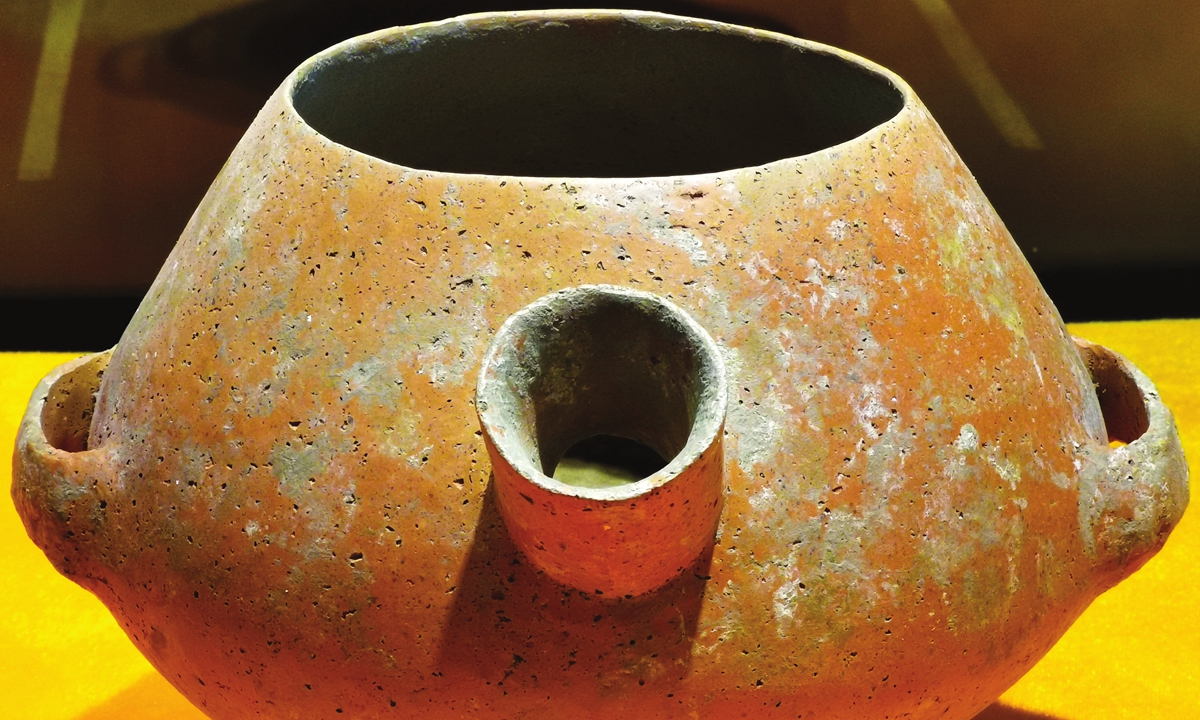ARTS / CULTURE & LEISURE
Chinese roots

Qijia Culture pottery Photo: IC
Qijia Culture: Ancient people use jade artifacts to worship Heaven and EarthFirst discovered in Qijiaping, Northwest China's Gansu Province, the Qijia Culture can be traced back to 3,500 to 4,300 years ago.
Spread throughout what is today the northwestern provinces of Qinghai, Gansu and Ningxia, the Qijia Culture is a representative culture of China's Bronze Age. Relics from this culture include pottery and jade objects as well as bronze knives, axes, poniards and mirrors.
The location of the culture meant it was influenced by ancient cultures in both Central and East Asia.
For example, some bronze wares unearthed at excavation sites have features related to the Seima-Turbino phenomenon, which describes the similarities in burial sites known for their bronze artifacts across northern Eurasia from Russia to Mongolia.
Experts believe that the appearance of bronze artifacts of Qijia Culture were greatly influenced by the Seima-Turbino phenomenon, which also contributed to the birth of copper smelting in the Central Plains of China.
The Qijia Culture produced varieties of jade artifacts. Most of the jade wares were quite plain without any decorative patterns, yet a few large jade knives with exquisitely carved patterns and even jade human-shaped masks have been found.
Among them, jade bi, a disc-shaped artifact, are the most common jade objects unearthed so far. Archaeologists believe that the Qijia people used these objects to establish communication between the gods and people, Earth and Heaven during sacrificial ceremonies.
The pottery wares of the Qijia Culture are also mostly plain. Experts say they were mainly influenced by the Longshan Culture near what is today Shandong Province on the east coast of China. A small amount of painted pottery include exquisite animal-shaped utensils painted with triangular or rhombus patterns.
In addition, the traces of crops such as millet and wheat, domesticated animals and sea shells have also been found at Qijia Culture sites, a reflection of its inextricable relationship with various cultures such as those in the Central Plains and in southern Asia.
The late Qijia Culture once reached the eastern part of today's Guanzhong, Northwest China's Shaanxi Province, which means it likely has impacted the culture of the adjacent Central Plains.
Global Times

